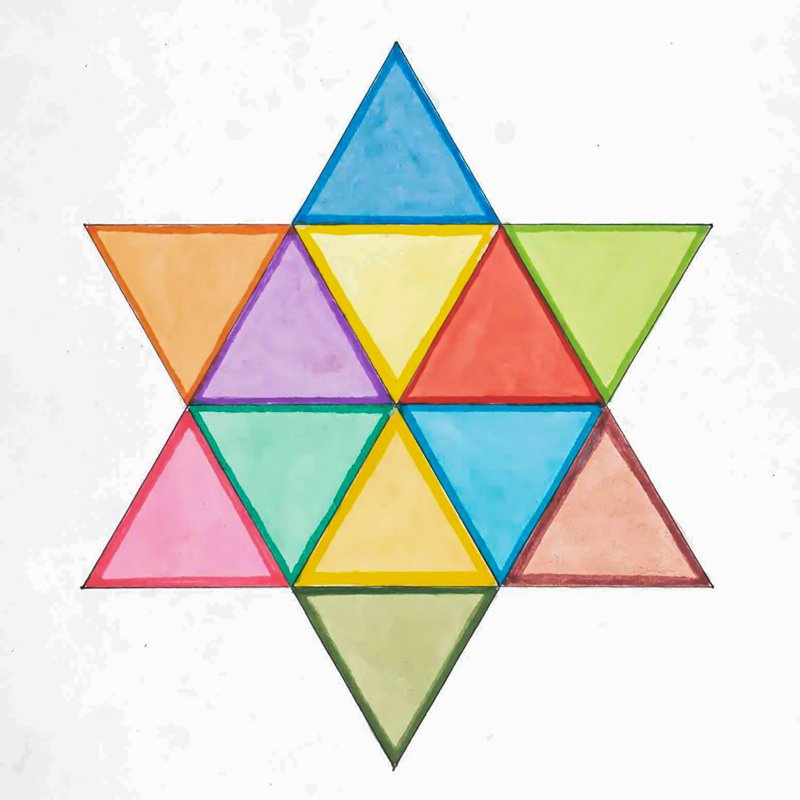Pillar Twenty Two
Artwork by A. Manivelu
Top

NORTH FACE:
SandalwoodSandalwood or chandana is the Asian evergreen tree, Santalum album. Most of the world’s sandalwood is grown in South India, in the state of Karnataka. Its sweetly fragrant heartwood is ground into the fine, tan-colored paste distributed as prasada in Saivite temples and used for sacred marks on the forehead, tilaka.

EAST FACE:
Betel LeafThe betel leaf, from the vine Piper betel, is used as an auspicious offering in homes and temples, and eaten as a digestive aid.

SOUTH FACE:
Six-Pointed StarShadkonam is the “six-pointed star,” formed by two interlocking triangles, the upper one representing Siva’s transcendent Being, and the lower one Siva’s manifest energy, Shakti. The shadkona is part of Lord Karttikeya’s yantra. A similar emblem in Judaism is of independent origin and signification. The cactus garden near Iraivan Temple is designed in the shape of a shadkonam.

WEST FACE:
PeacookThe peacock is the vahana, or mount, of Siva’s son, Lord Murugan, symbolizing effulgent beauty and religion in full glory. The peacock can control powerful snakes, such as the cobra, symbolizing the soulful domination of the instinctive elements—or control of the kundalini, which is yoga.
1 of 4
Middle

NORTH FACE:
Flute and CymbalsFlute and cymbals, traditional musical instruments from ancient times still used today.

EAST FACE:
TamburaThe tambura is a long-necked, four-stringed, fretless lute that provides a drone accompaniment for a singer or instrumentalist.

SOUTH FACE:
VinaThe vina is a sophisticated stringed musical instrument widely played in India.

WEST FACE:
MridangamMridangam is a two-sided drum common in South India.
1 of 4
Bottom

NORTH FACE:
Saiva SannyasinHere is a Saiva sannyasin, a renouncer who has taken sannyasa diksha, which makes him a Hindu monk, swami, and one of a world brotherhood (or holy order) of sannyasins. Some are wanderers and others live in monasteries. He carries a bamboo danda and a kamandalu, a copper water pot.

EAST FACE:
Siva NatarajaSiva Nataraja, King of Dance, is the Cosmic Dancer. Perhaps Hinduism’s richest and most eloquent symbol, Nataraja represents Siva, the Primal Soul, Parameshvara, as the power, energy and life of all that exists.
1 of 2
